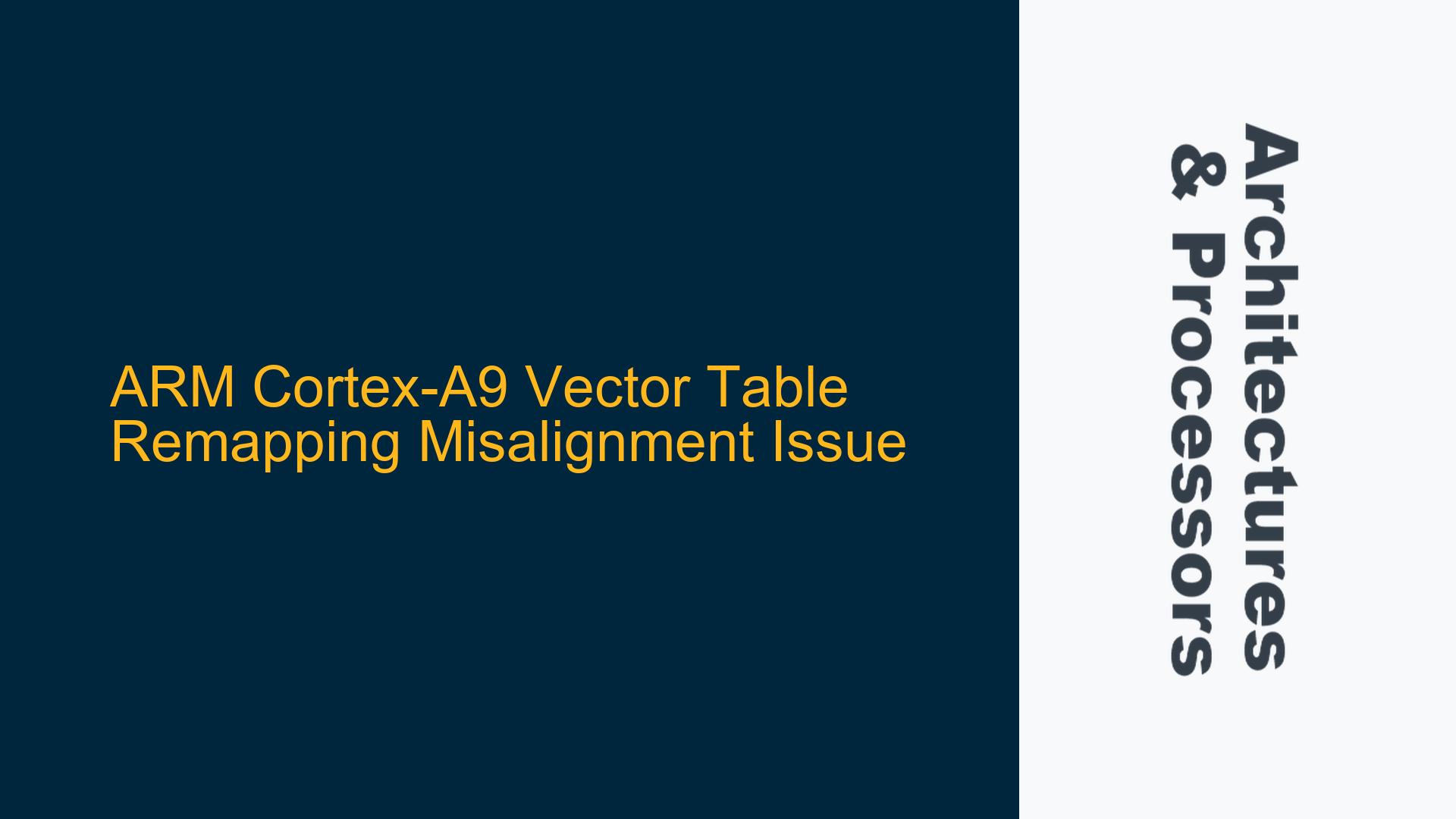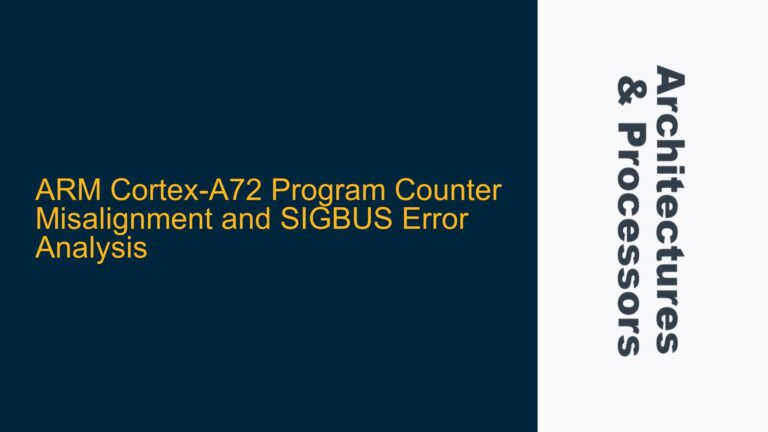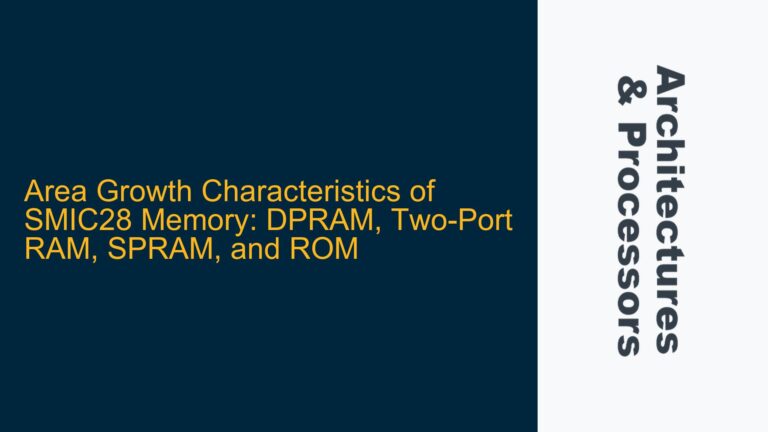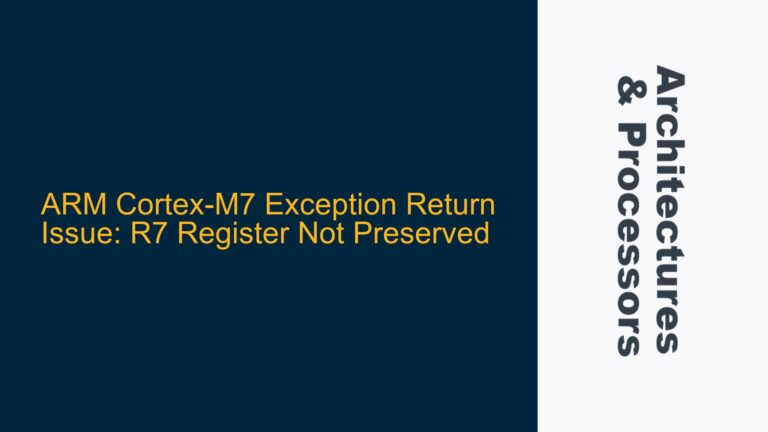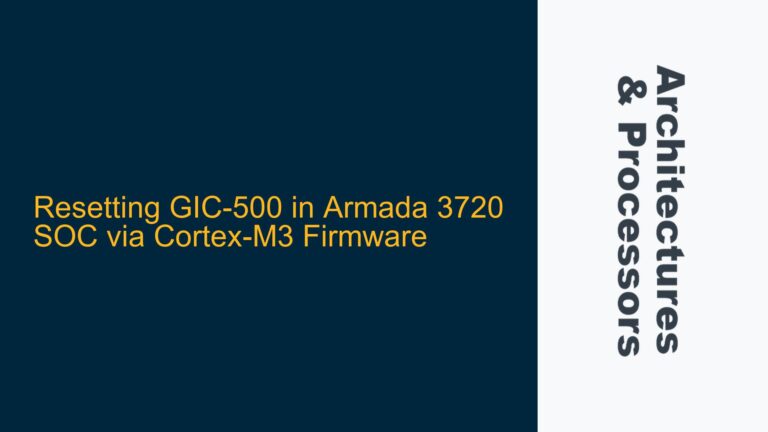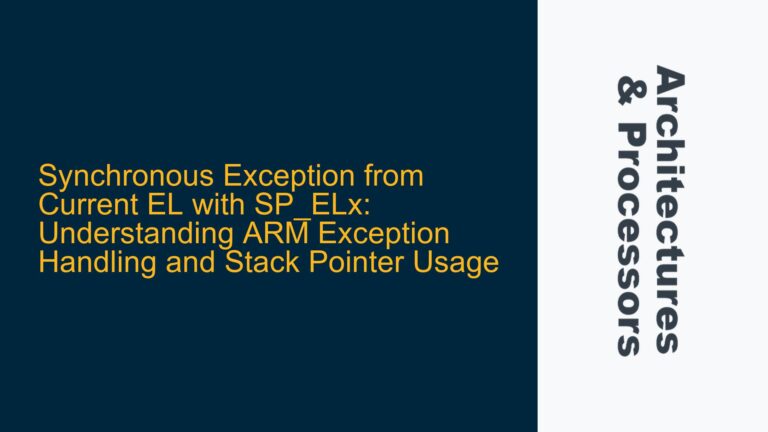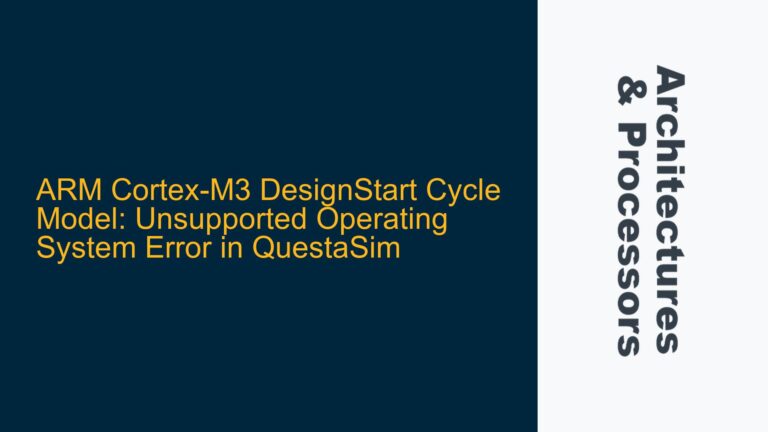ARM Cortex-A9 Vector Table Remapping and IRQ Handling Misalignment
The ARM Cortex-A9 processor, like other ARMv7-A architecture processors, relies on a vector table to handle exceptions and interrupts. The vector table contains addresses of exception handlers, and its base address is stored in the Vector Base Address Register (VBAR). Properly remapping the vector table is critical for ensuring that the processor correctly routes exceptions and interrupts to the appropriate handlers. However, a common issue arises when the vector table is not aligned to the required 32-byte boundary, leading to incorrect exception handling, such as IRQ interrupts being routed to the SVC handler instead of the intended IRQ handler.
In this scenario, the problem manifests when an interrupt occurs, and the processor incorrectly jumps to the SVC handler instead of the IRQ handler, despite the CPU being in IRQ mode. This behavior is often caused by misalignment of the vector table in memory, which violates the ARMv7-A architectural requirements for the VBAR. The following sections provide a detailed analysis of the issue, its root causes, and the steps required to resolve it.
VBAR Alignment Requirements and Exception Handling in ARMv7-A
The ARMv7-A architecture specifies strict alignment requirements for the vector table when using the VBAR. According to the ARM Architecture Reference Manual, the VBAR must point to a memory address that is aligned to a 32-byte boundary. This requirement is enforced because the vector table consists of eight exception vectors, each occupying 4 bytes, totaling 32 bytes. The lower 5 bits of the VBAR (bits[4:0]) are reserved and must be zero. If these bits are not zero, the processor will misinterpret the vector table’s base address, leading to incorrect exception handling.
The vector table for the ARM Cortex-A9 processor typically includes the following exception vectors in order:
- Reset
- Undefined Instruction
- Supervisor Call (SVC)
- Prefetch Abort
- Data Abort
- Reserved
- IRQ
- FIQ
Each of these vectors must be placed at specific offsets from the base address stored in the VBAR. For example, the IRQ handler must be located at an offset of 0x18 from the base address. If the base address is not aligned to a 32-byte boundary, the processor will calculate incorrect offsets, causing it to jump to the wrong exception handler.
In the case described, the vector table was placed at address 0x009005B0, which is not aligned to a 32-byte boundary. This misalignment caused the processor to misinterpret the base address, resulting in the IRQ being incorrectly routed to the SVC handler. The alignment issue is further compounded by the fact that the SCTLR (System Control Register) V bit, which controls the location of the exception vectors, was cleared, indicating that the processor should use the VBAR for exception handling. However, the misaligned VBAR led to incorrect behavior.
Root Causes of Vector Table Misalignment and IRQ Routing Errors
The primary cause of the issue is the misalignment of the vector table in memory. The ARMv7-A architecture requires the vector table to be aligned to a 32-byte boundary, but the vector table in question was placed at address 0x009005B0, which does not meet this requirement. This misalignment causes the processor to calculate incorrect offsets for the exception vectors, leading to the observed behavior where IRQ interrupts are routed to the SVC handler.
Another contributing factor is the handling of the SCTLR V bit. The SCTLR V bit determines whether the processor uses the high or low exception vectors. When the V bit is cleared, the processor uses the low exception vectors, which are defined by the VBAR. In this case, the V bit was cleared, but the misaligned VBAR caused the processor to misinterpret the vector table’s base address. This highlights the importance of ensuring both proper alignment and correct configuration of the SCTLR V bit when remapping the vector table.
Additionally, the assembly code used to set the VBAR and configure the SCTLR V bit may not have included the necessary memory barriers or cache management instructions. ARM processors often require data synchronization barriers (DSB) and instruction synchronization barriers (ISB) to ensure that changes to system registers, such as the VBAR and SCTLR, are properly synchronized with the processor’s pipeline and memory system. The absence of these barriers can lead to unpredictable behavior, especially in systems with caches or multiple cores.
Correcting Vector Table Alignment and Ensuring Proper Exception Handling
To resolve the issue, the vector table must be aligned to a 32-byte boundary, and the VBAR must be set correctly. The following steps outline the necessary actions to ensure proper exception handling in an ARM Cortex-A9 processor:
-
Align the Vector Table to a 32-Byte Boundary: The vector table must be placed at an address that is a multiple of 32 (0x20). For example, if the vector table is placed at address 0x00900600, it will meet the alignment requirement. This can be achieved by using linker scripts or manual placement in the source code.
-
Set the VBAR Correctly: The VBAR must be loaded with the base address of the aligned vector table. This can be done using the
MCRinstruction, as shown in the following assembly code:ldr r0, =vector_tbl // Load the base address of the vector table mcr p15, 0, r0, c12, c0, 0 // Write the base address to VBAR -
Configure the SCTLR V Bit: Ensure that the SCTLR V bit is cleared to use the low exception vectors defined by the VBAR. This can be done using the following assembly code:
mrc p15, 0, r0, c1, c0, 0 // Read SCTLR bic r0, r0, #0x2000 // Clear the V bit mcr p15, 0, r0, c1, c0, 0 // Write SCTLR -
Insert Memory Barriers: After modifying the VBAR or SCTLR, insert data synchronization barriers (DSB) and instruction synchronization barriers (ISB) to ensure that the changes take effect immediately. For example:
dsb // Data synchronization barrier isb // Instruction synchronization barrier -
Verify the Vector Table Contents: Ensure that the vector table contains the correct exception handlers in the proper order. The following table shows the required layout of the vector table:
Offset Exception Type Handler Label 0x00 Reset __boot 0x04 Undefined Instruction undef_isr 0x08 SVC svc_isr 0x0C Prefetch Abort prefetch_isr 0x10 Data Abort abort_isr 0x14 Reserved N/A 0x18 IRQ irq_isr 0x1C FIQ fiq_isr -
Test the Exception Handling: After implementing the above steps, test the exception handling by triggering an IRQ and verifying that the processor jumps to the correct IRQ handler. Use a debugger to inspect the VBAR, SCTLR, and vector table contents to ensure they are configured correctly.
By following these steps, the issue of incorrect IRQ routing due to vector table misalignment can be resolved. Proper alignment, configuration of the VBAR and SCTLR, and the use of memory barriers are essential for ensuring reliable exception handling in ARM Cortex-A9 processors.
